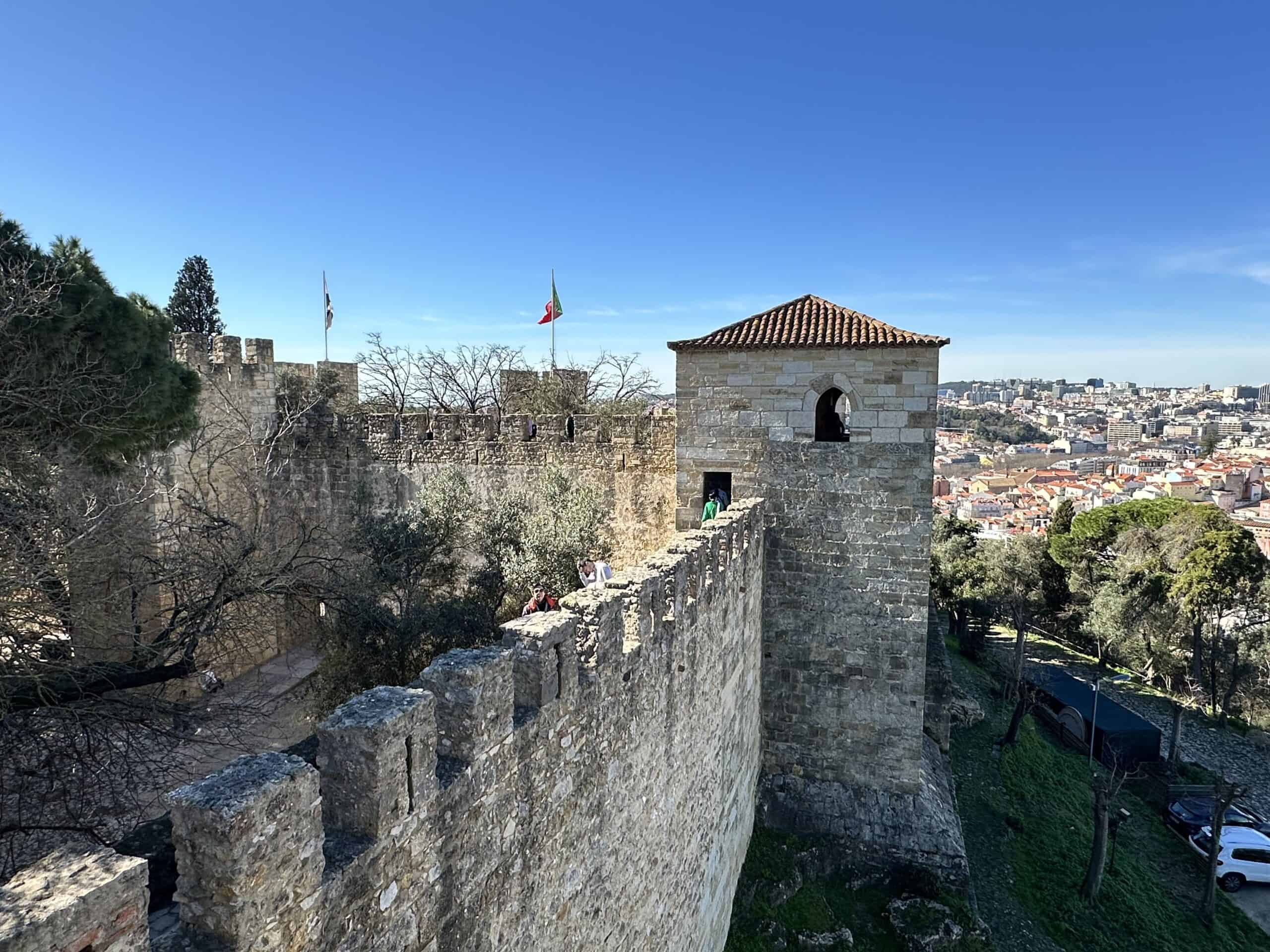
The Castle of São Jorge is one of the symbols of Lisbon and is perched on the hill overlooking the Alfama district.
The oldest fortification built in this place dates back to the seventh century BC with numerous finds found in this area of the city.
Archaeological excavations have made it possible to discover Phoenician, Greek, Carthaginian, Roman and Muslim remains, which prove a constant occupation of the place.
The castle was founded between the tenth and eleventh centuries, when Lisbon was an important Muslim port city.
In 1147, Portuguese troops captured the castle and the city, wresting them from the Moors.
From 1200 onwards, the ancient Moorish buildings were enlarged and adapted to house the royal court, the bishop and the royal archives.
In the sixteenth century, it was here that King D. Manuel I received Vasco da Gama on his return from his sea voyage to India.
The building returned to have a military-defensive function between the seventeenth and eighteenth centuries.
It was the center of the most important events in Portuguese history until 1500, when King Manuel I moved the seat of his residence to Praça do Comércio.
Inside there is also the historical museum where you can retrace the history of the capital.
The gardens of the castle represent a small oasis of greenery in the city, trees of different species grow here: you can walk among olive trees, maritime pines, carob trees and other species native to Portugal. Numerous peacocks can be found in this area.
The only area of the castle that can only be accessed by guided tour is the archaeological site, which includes ruins dating back to three significant periods in Lisbon’s history: the seventh century BC, which was the site of the first inhabited settlements, the Islamic era and the period immediately following the earthquake.
Declared a National Monument in 1910, during the twentieth century the castle underwent major restoration works that gave it its current appearance.
The Castelo de São Jorge is one of the most important places in the city and its view of the Tagus is the best in the city.

























